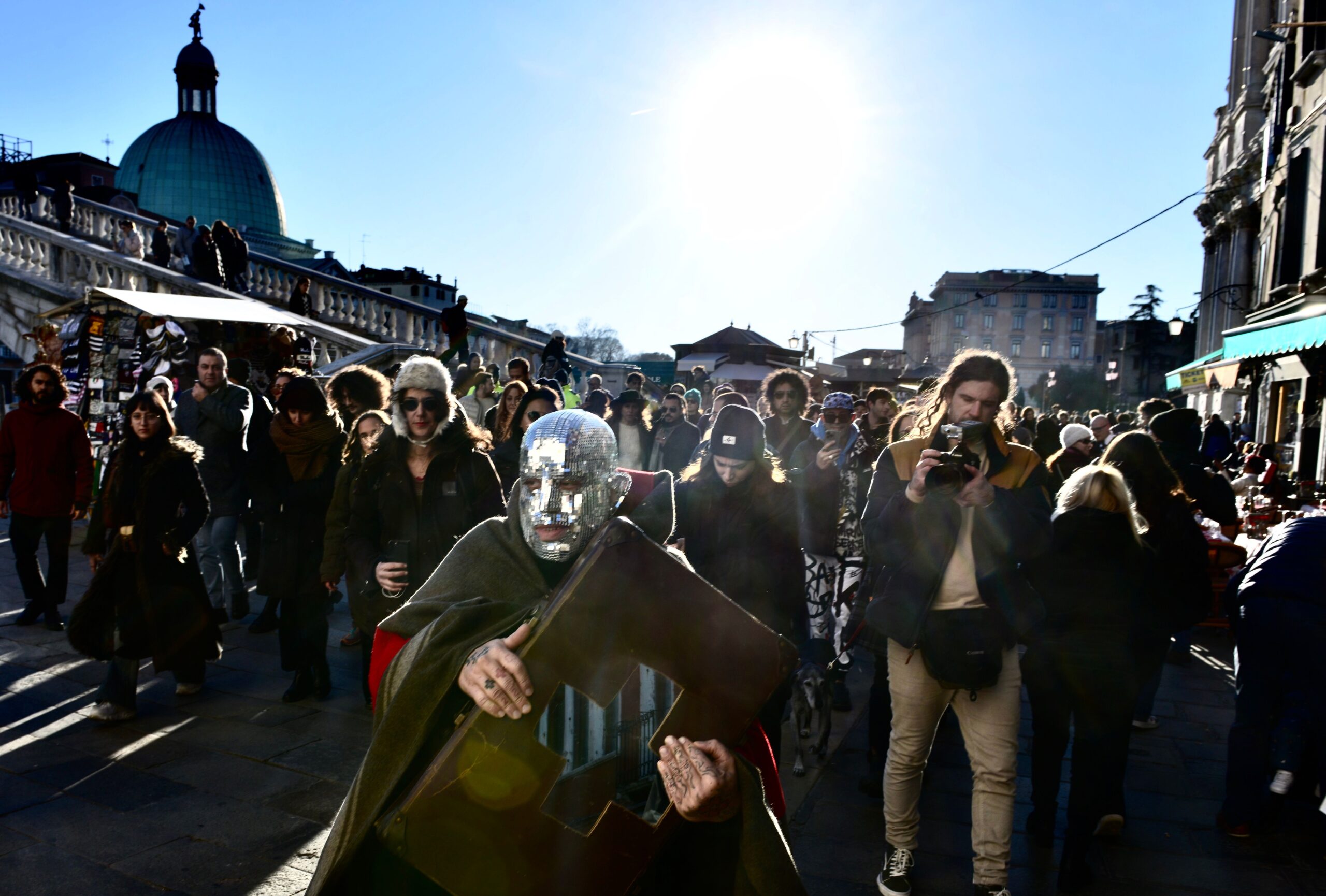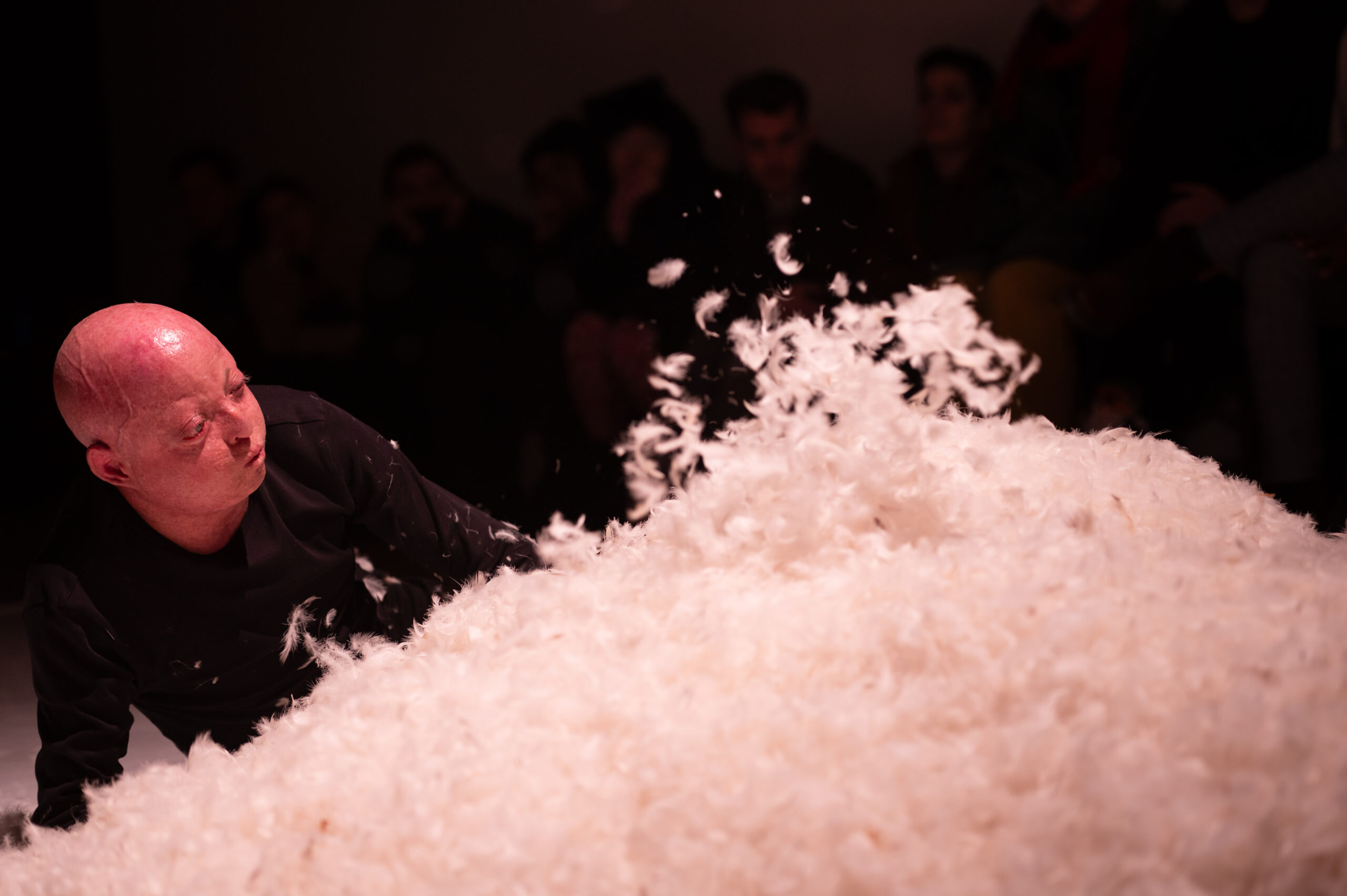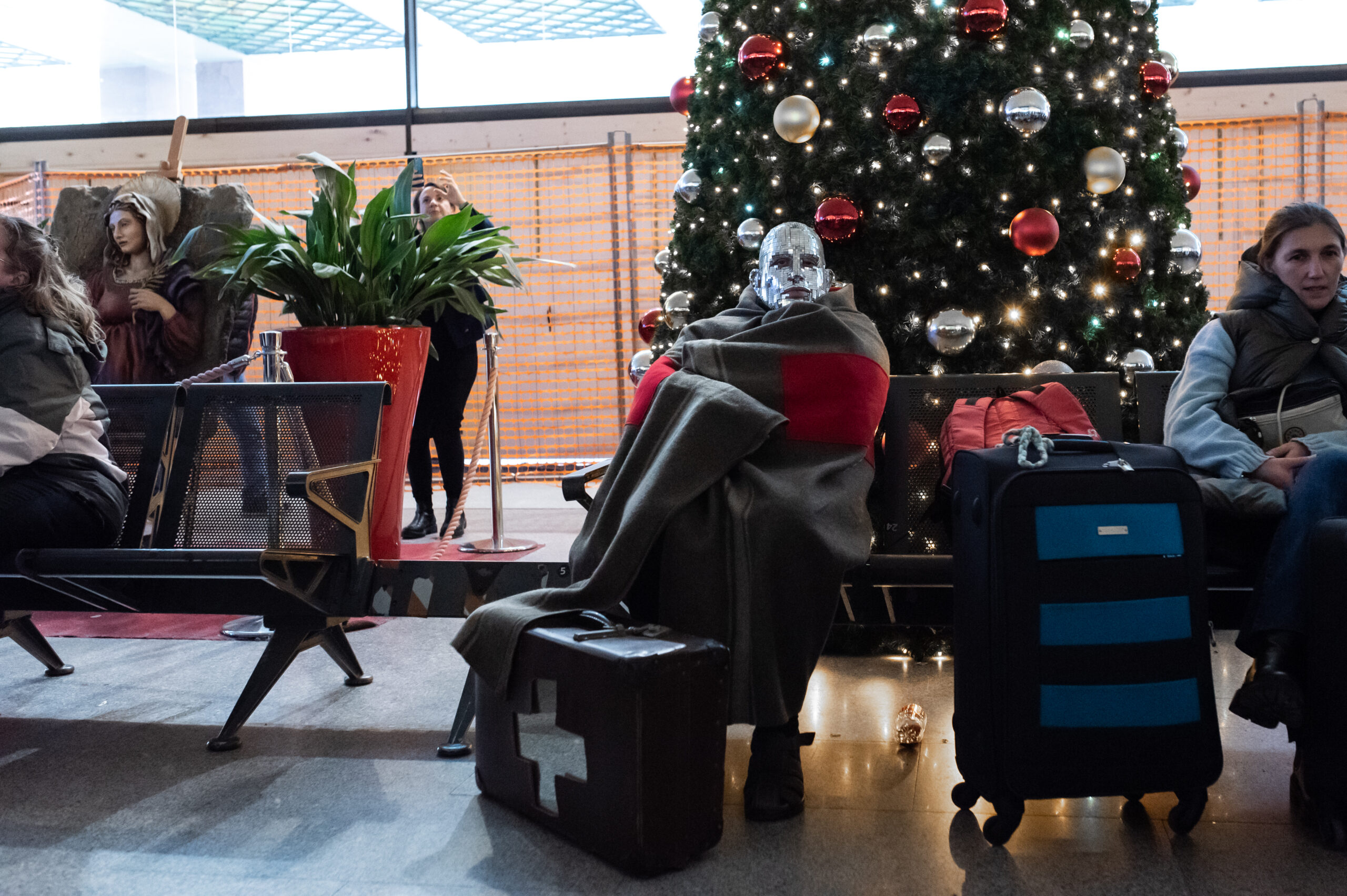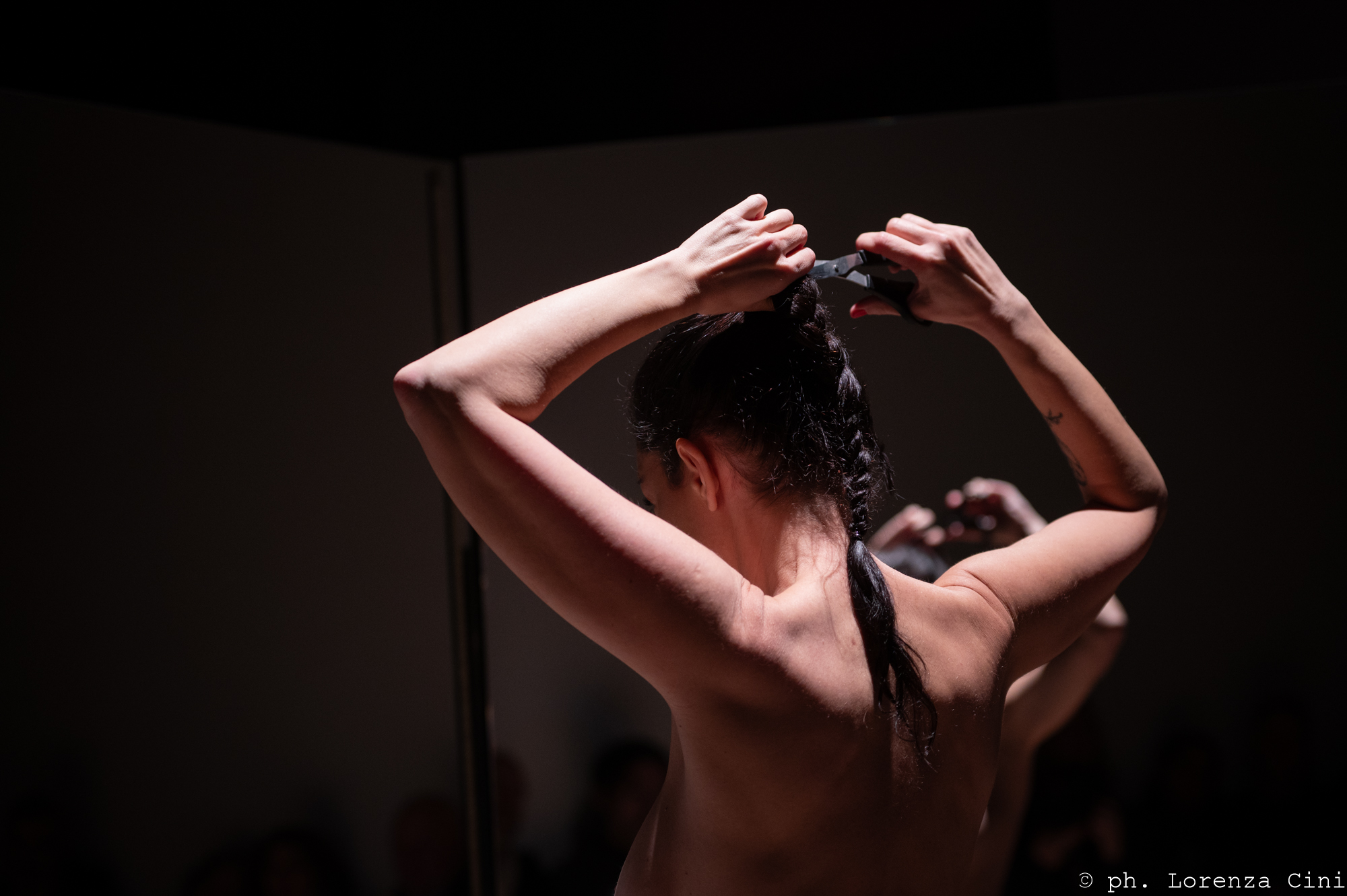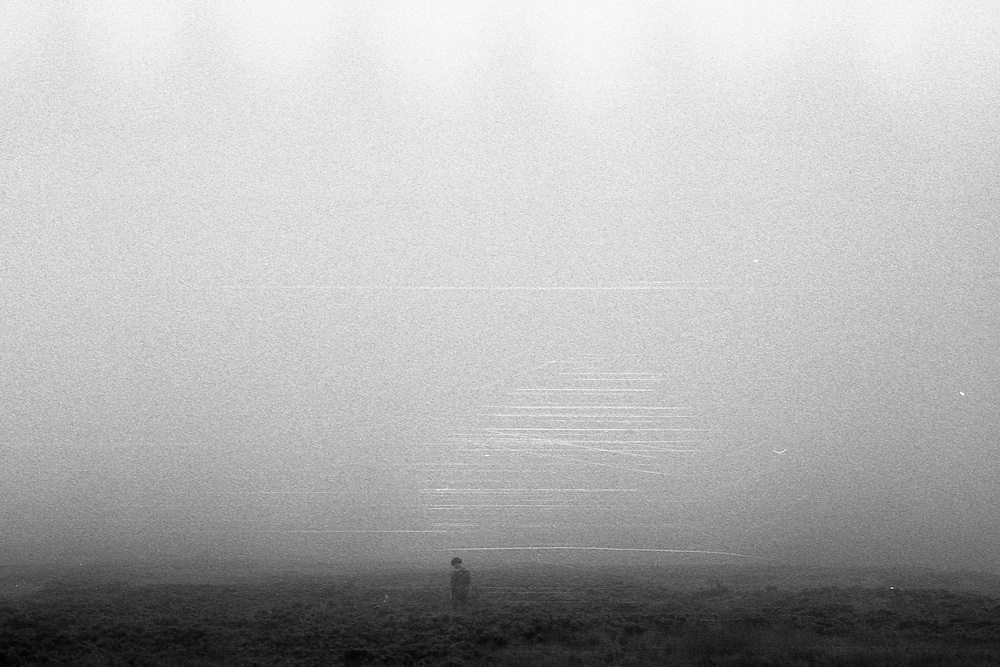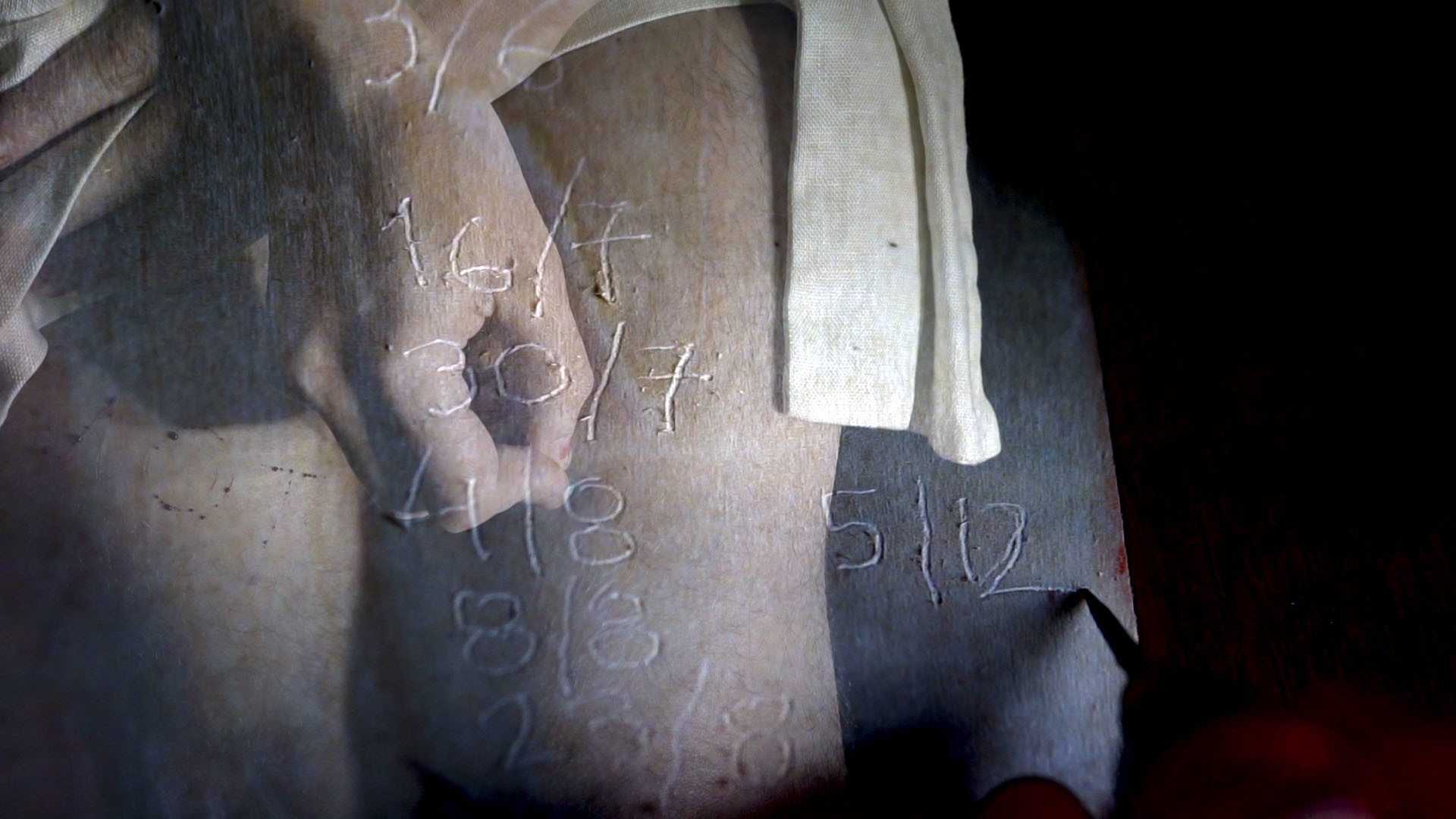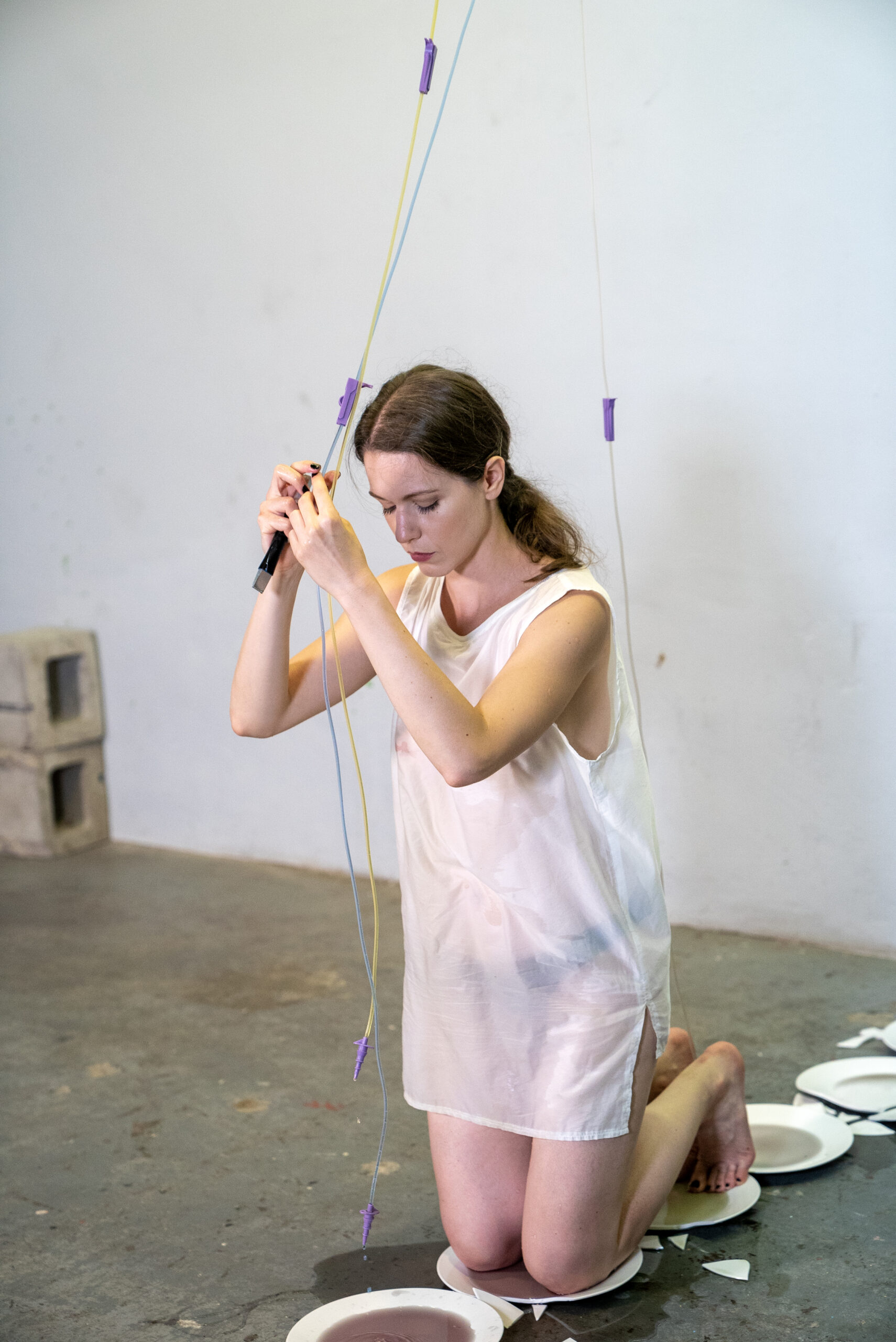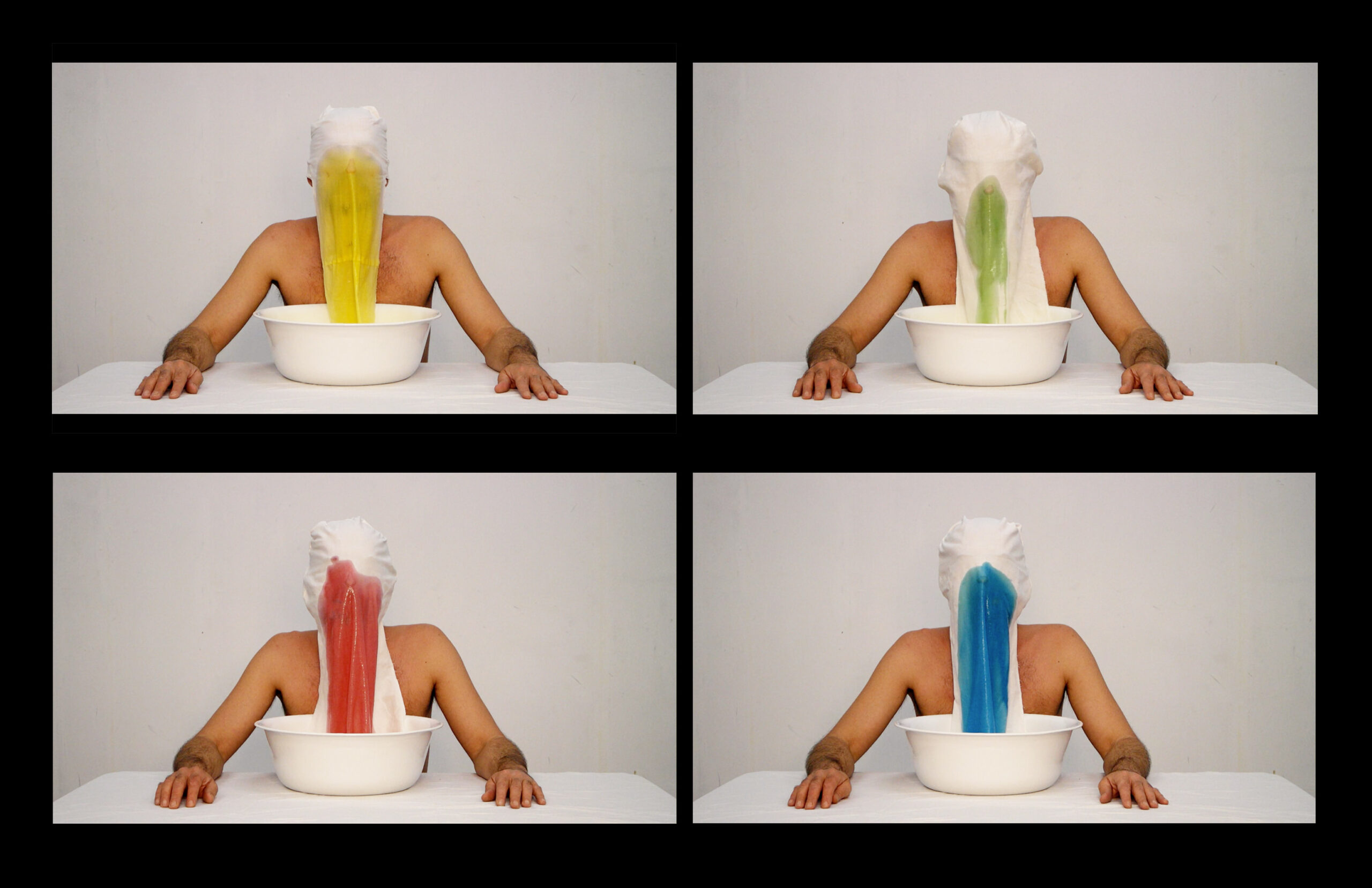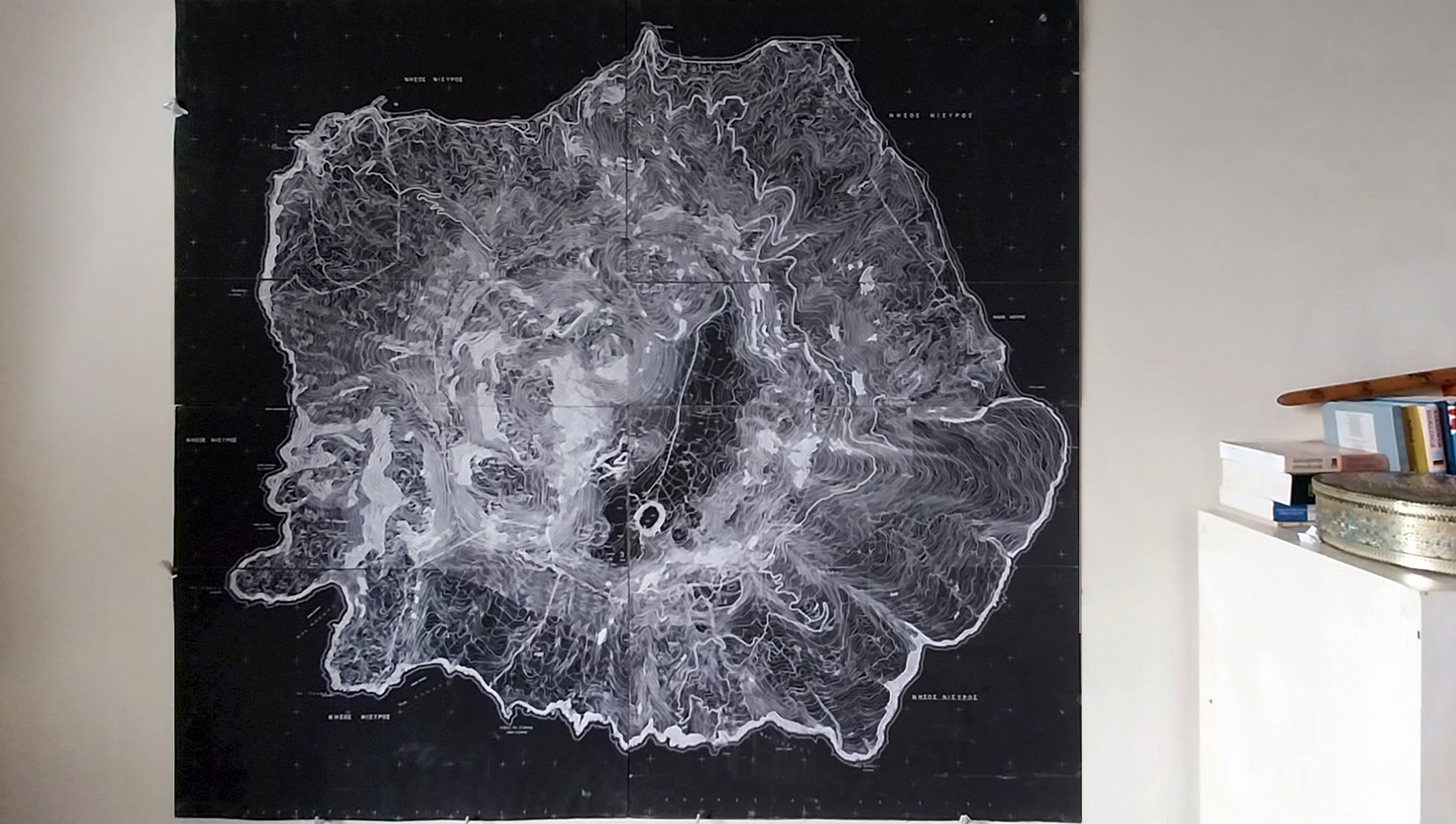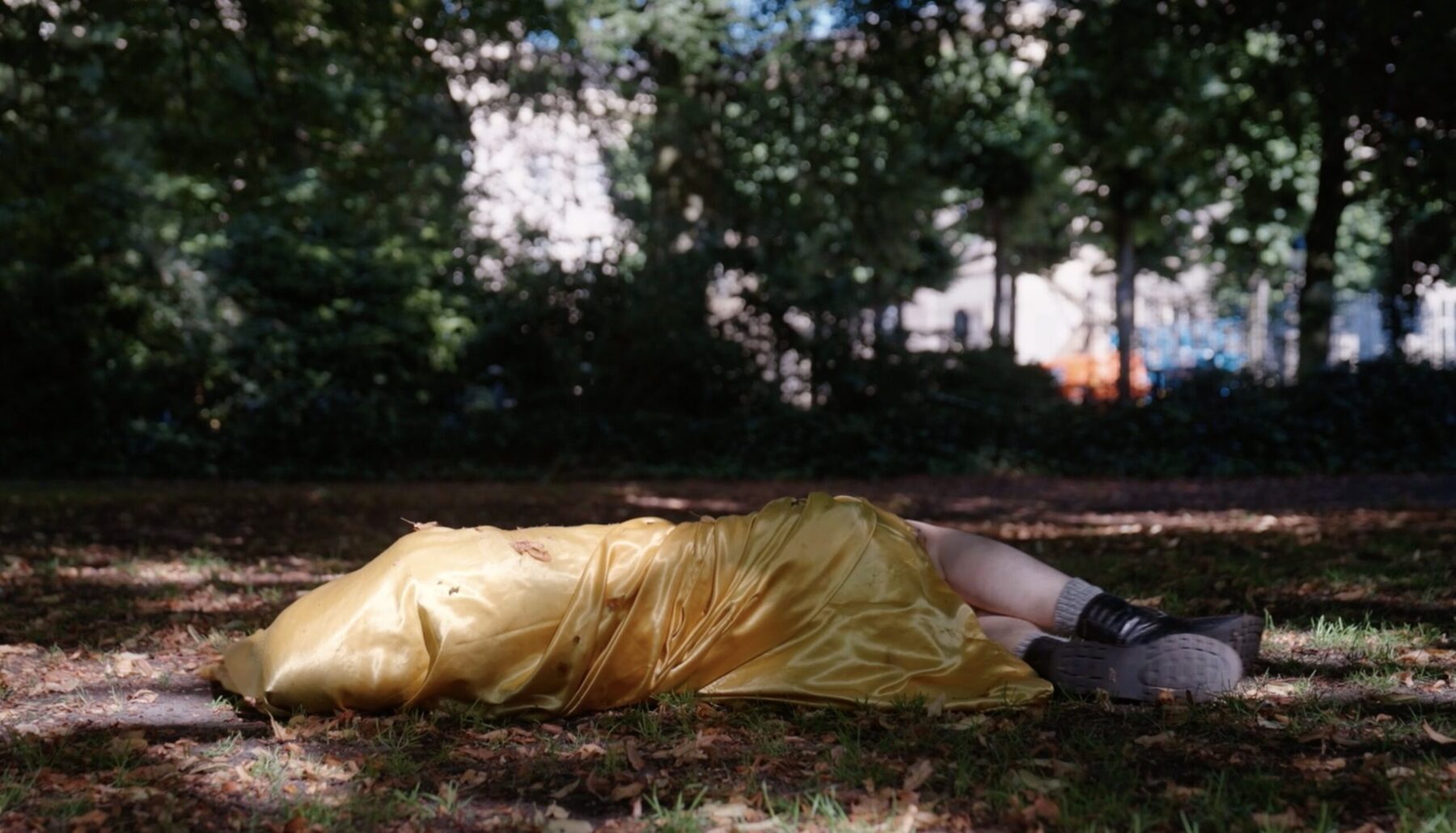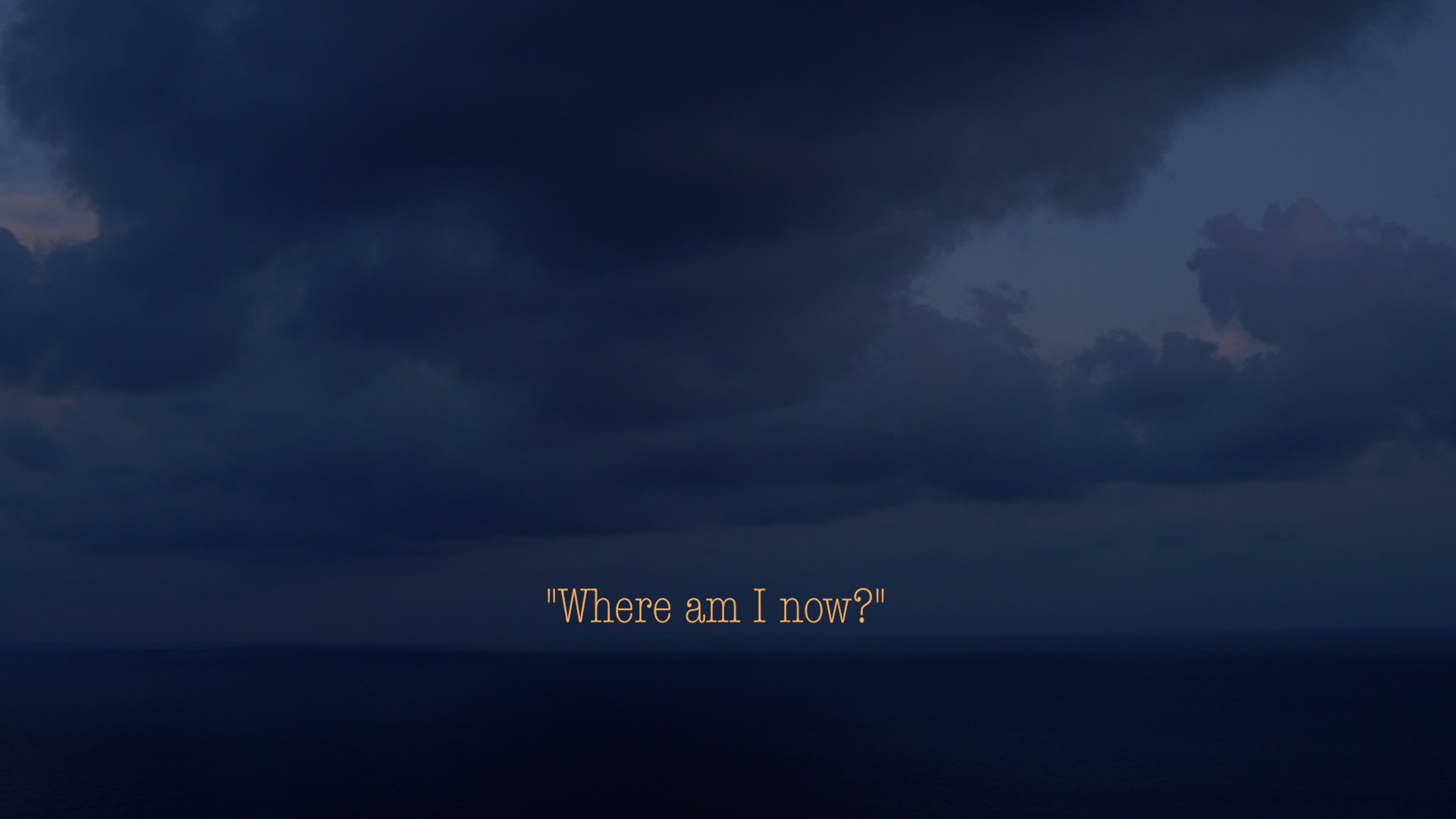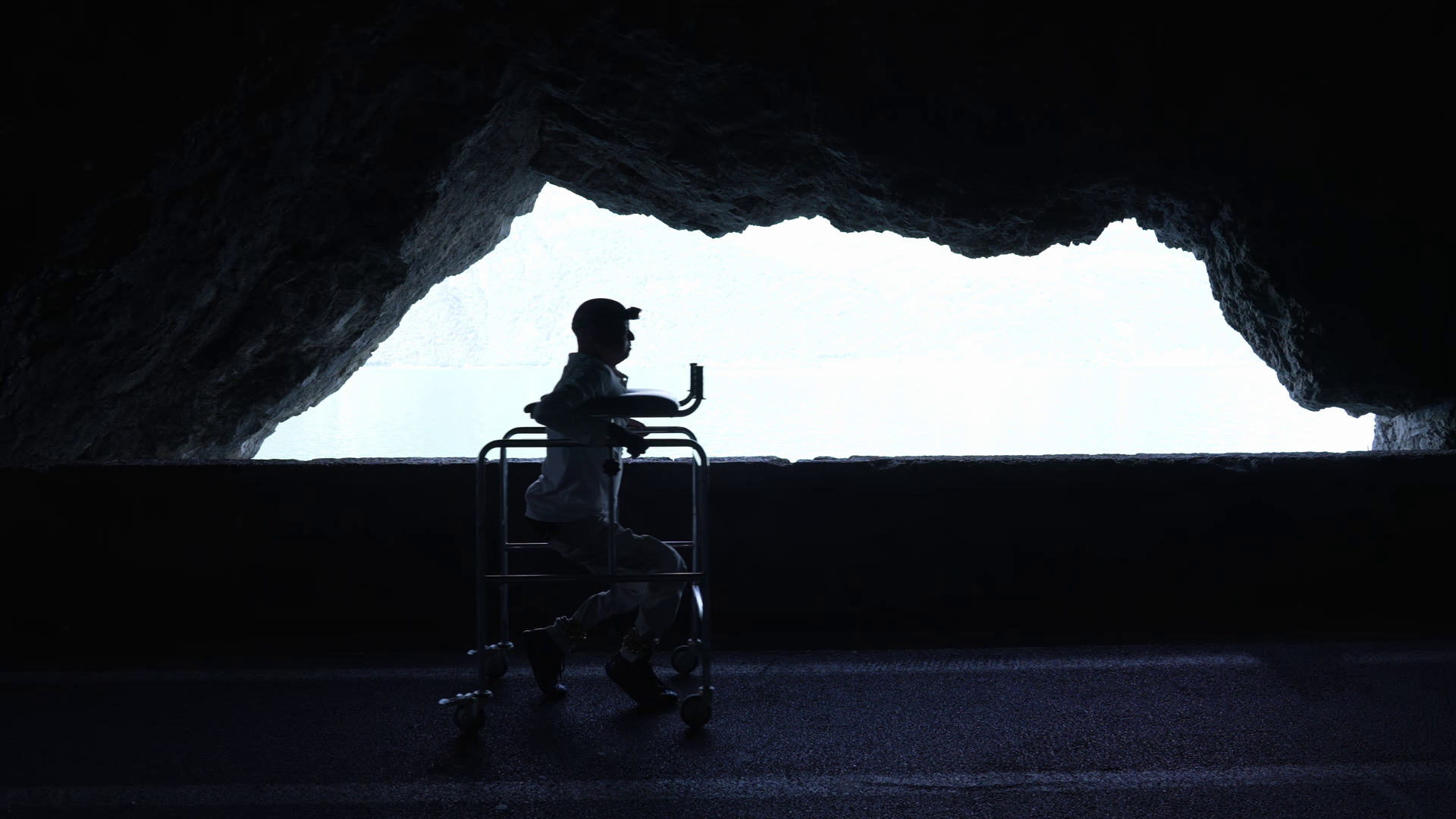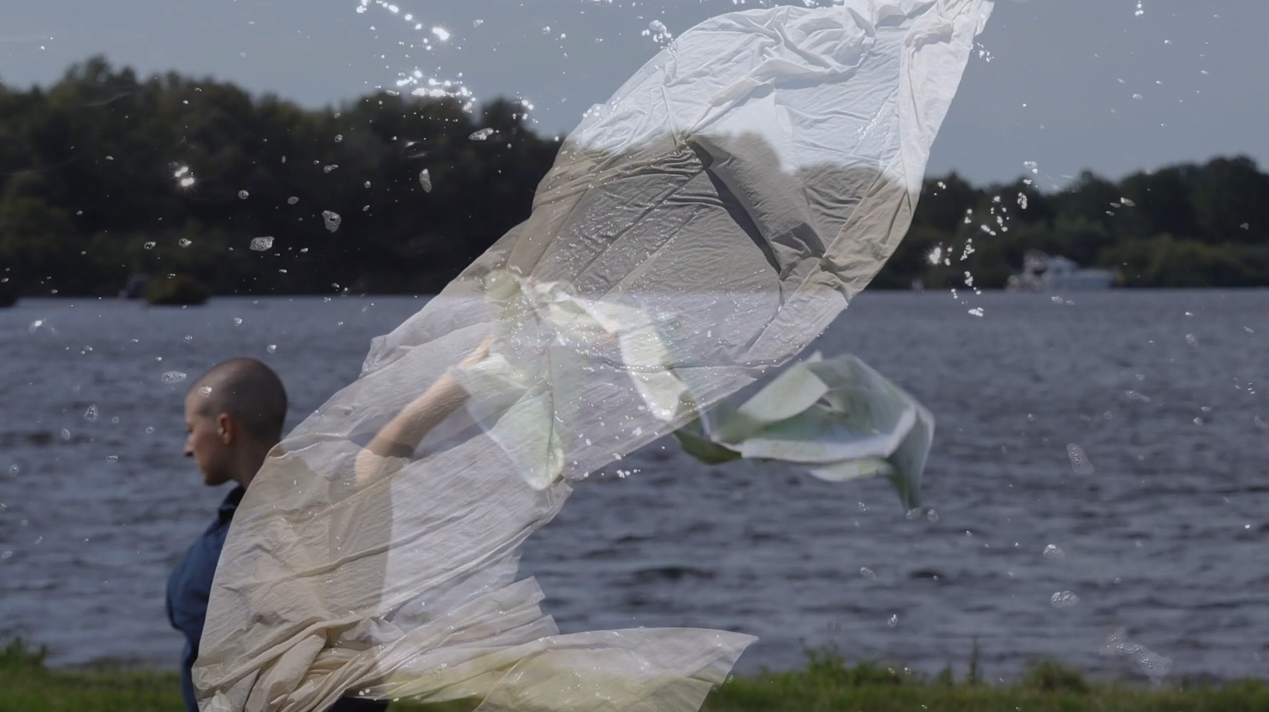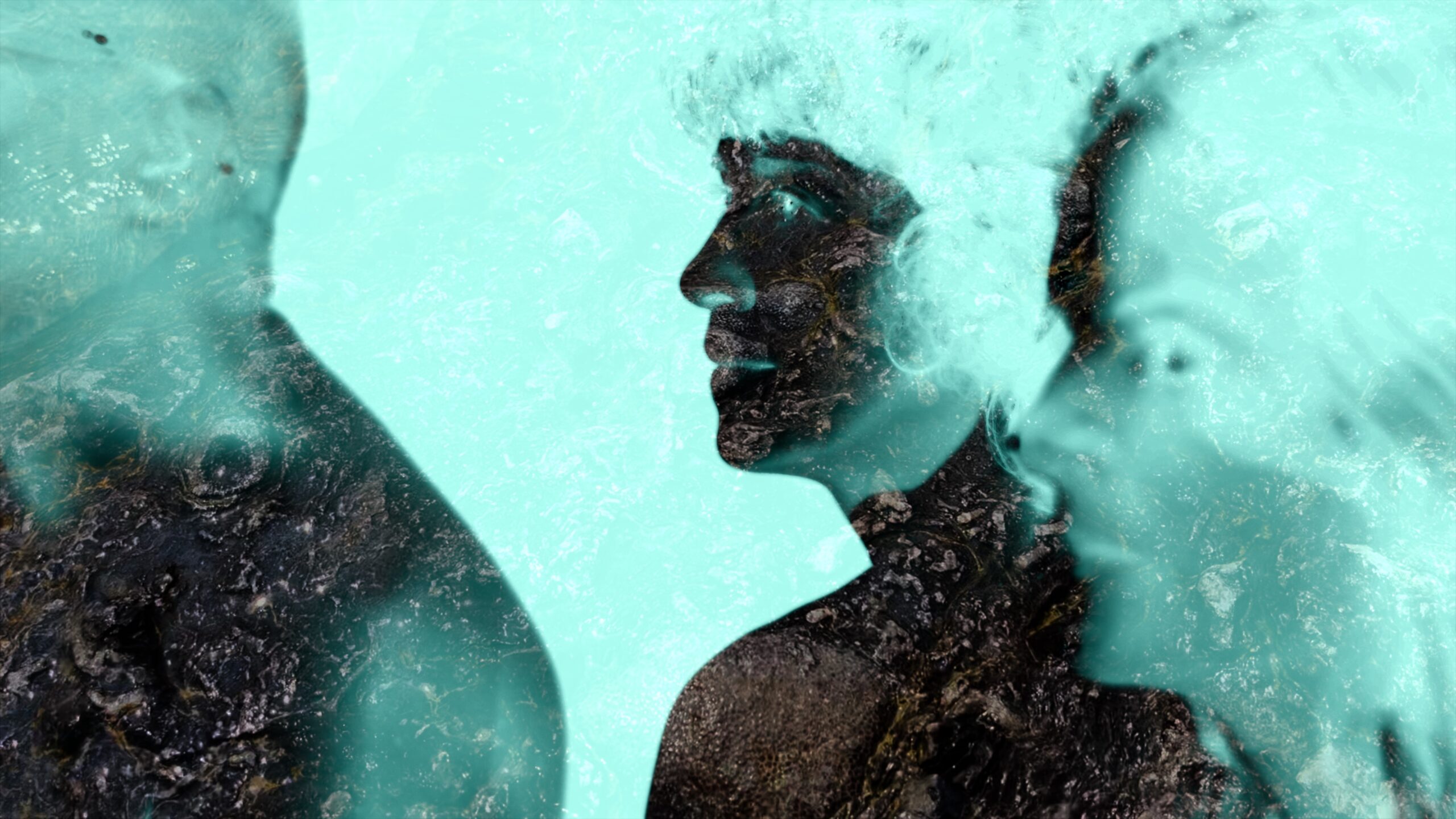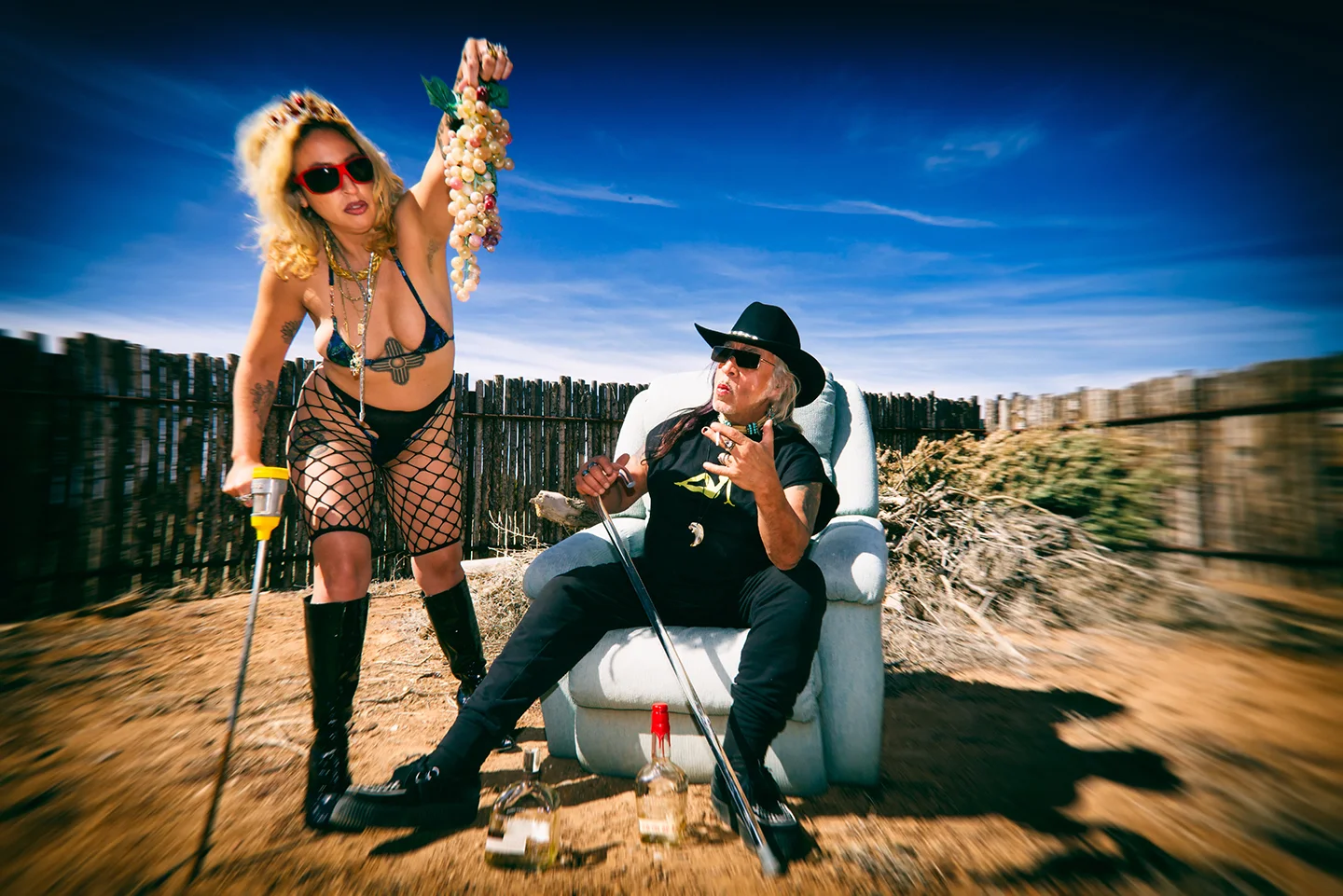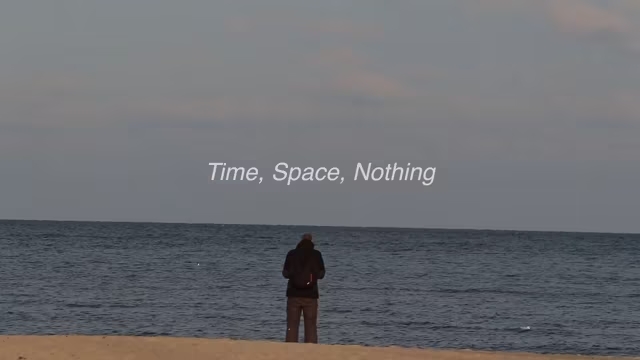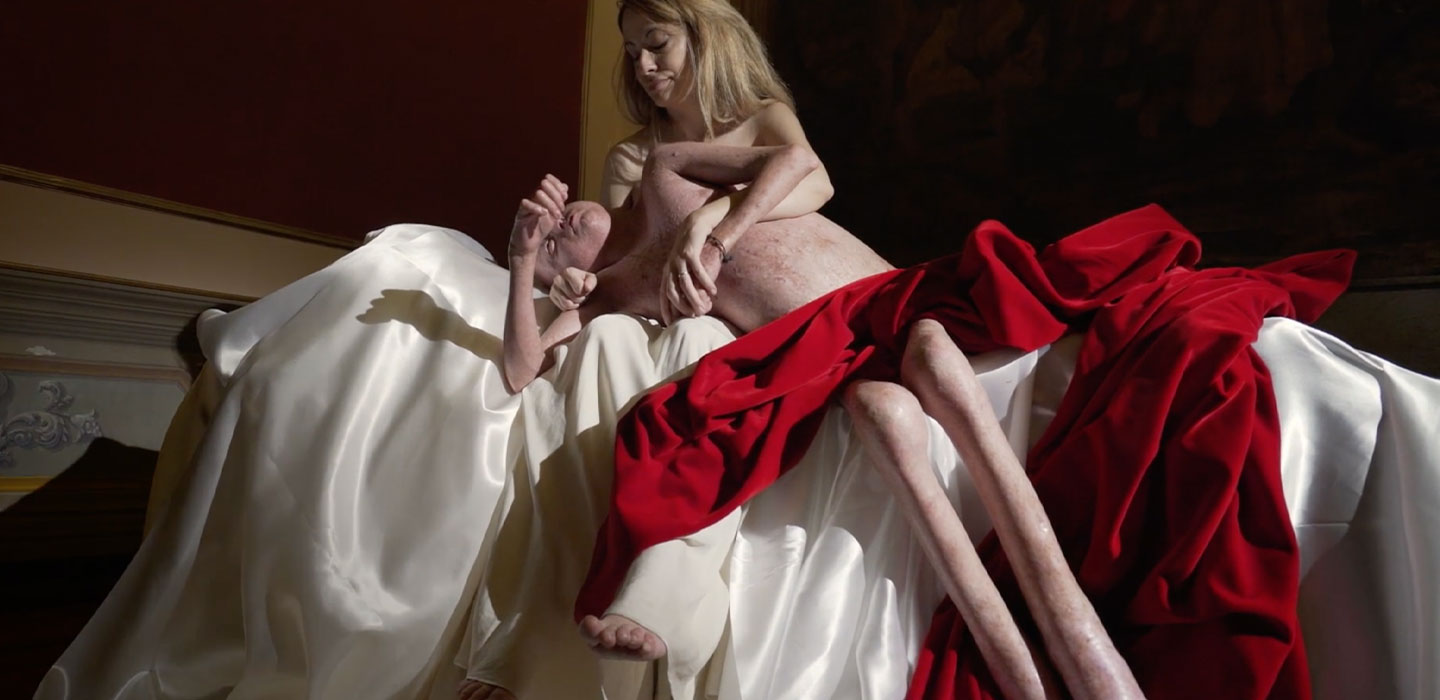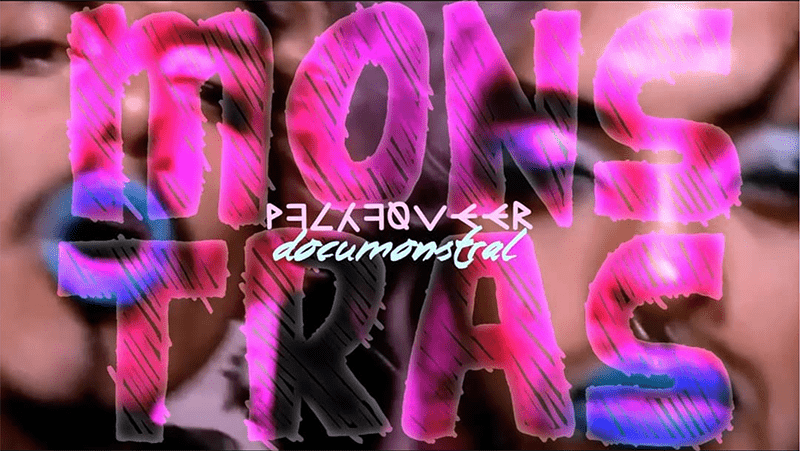SERIES
VIPAW 2023
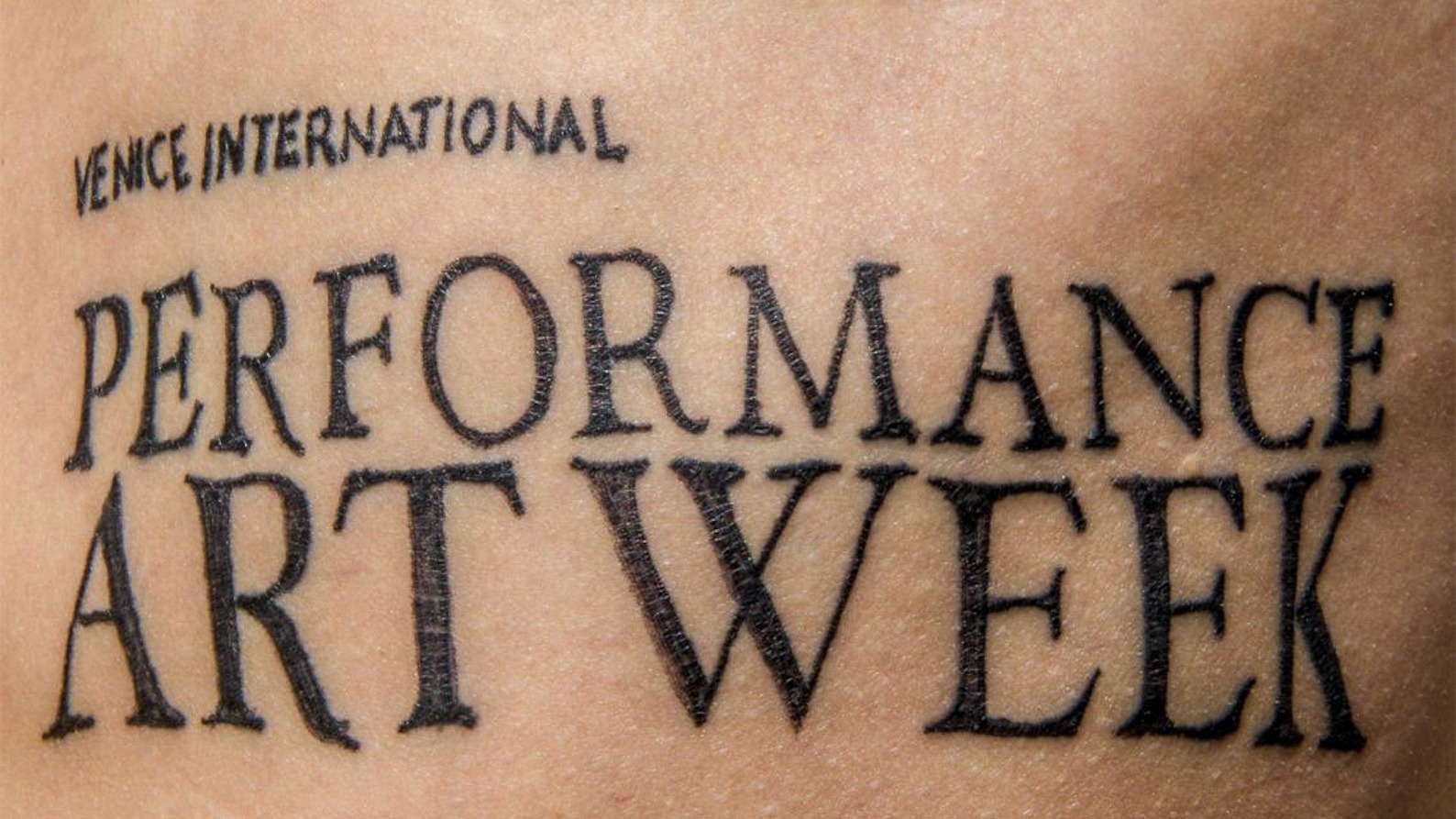
A note from PAV’s artistic director
The VIII VENICE INTERNATIONAL PERFORMANCE ART WEEK 2023 (VIPAW 2023) presents DigiLabAir | Emergencies of the Contemporary, focusing on sustainable development as a fundamental principle of our societies.
The exhibition and live performance program feature internationally recognised and emerging performance artists addressing pressing issues such as marginalisation, poverty, climate emergency, migration, accessibility, social and gender equality, justice and peace.
MINI MOVIE VIpaW 2023
The VIII VENICE INTERNATIONAL PERFORMANCE ART WEEK 2023 presents “DigiLabAir | Emergencies of the Contemporary”.
The event was focused on sustainable development as a fundamental principle of our societies, featuring a live performance program with internationally recognised performance artists addressing pressing issues such as marginalisation, poverty, climate emergency, migration, accessibility, social and gender equality, justice and peace.
“We are all part of this. We are all in this together. Let’s do it differently. Let’s do it in a way that we have never done before. And then, let’s never do it again this way. Let’s do it anew, every time, anew. Each and every time is different, and each and every time is new.” VESTANDPAGE.
Featured artists:
Andrigo/Aliprandi (with Anna Maschietto, Ilaria Bagarolo, Maria Cargnelli, Michela Lorenzano, Valentina Milan, Maela Dal Mas), Franko B, Niya B, Nicola Fornoni, Dyana Gravina, Marta Jovanovic, Petra Kuppers, Steef Kersbergen & Vicky Maier, Yiannis Pappas, Priiya Prethora, Gabriele Provenzano, Sabrina Bellenzier & Giorgi Rodionov.
The VIII VENICE INTERNATIONAL PERFORMANCE ART WEEK 2023
has been curated by its founders VestAndPage (Andrea Pagnes & Verena Stenke) in collaboration with Anja Foerschner (ECC Performance Art), Marta Jovanovic (G12 Hub), Francesco Kiais Mind the G.A.P.), Agustin Arguello & Gabriel Lyons (PAV – Performance Art Video).
Produced by Studio Contemporanéo, Live Arts Cultures, EntrAxis and PAV Performance Art Supported by the European Cultural Centre (ECC), We Exhibit, Venezia Prime Scelte, Daily Press.
The DigiLabAir exhibition has been co-funded by the European Union in collaboration with the Goethe-Institut Mailand.
Cultural partnership: Accademia Unidee –
Citta dell’arte Fondazione Pistoletto, Biella, and RUFA Rome University of Fine Arts.
Under the patronage of Regione Veneto, Città Metropolitana di Venezia and Le Città in Festa.
Technical direction: Aldo Aliprandi, Giovanni Dantomio.
Logistics: Giorgia De Santi, Giorgio de Battisti.
Event writer: Giulia Casalini.
Photographers: Lorenza Cini, Hugo Glendinning, Alexander Harbaugh, Edward Smith
Videographers: Matilde Sambo, Orlando Myxx.
Camera and editing: Matilde Sambo
Sound and Music: Mauro Sambo
LIVE PERFORMANCES VIpaW 2023
“A feather is very light, but when there are many, it is complicated to move them just by breathing. 3 is the perfect number—a symbol of vitality. I blow on 3 kg of white feathers and invite you to join me. Our breaths will meet between order and disorder, help and obstacle.” – Nicola Fornoni.
“As always, I am not interested in just telling my story. I tap and share the story told and untold of our humanity, which I live through witnessing these present times—for I’m here, in this space, and not alone. This performance is a journey through personal and collective memories and history. The body and the artist’s body become a canvas, a sculpture, poetry, and a sound, too”
SOLA reflects on experiences of loneliness and isolation but also on solidarity and the hope that holds out against them.
The artist’s hair, growing since the beginning of the Covid-19 pandemic, becomes a symbol for the loss of physical contact that our lives became marked by. With the act of braiding being an act of sisterly companionship and consolidation, the artist has to execute it alone. What is more, in SOLA the hair becomes a marker of time, having grown through the numerous crises that marked the past years with the eruption of violence all over the globe and in particular against women.
digilabair exhibition VIpaW 2023
‘these teeming forms’ was shot on England’s South Pennine Moorland in a breath between lockdowns in 2021. These windswept hills formed Joseph’s adolescent horizon and they have returned there in adulthood, walking out into the land holding grief, seeking connection.
The film has a sensate and mythic quality; performance actions to camera are collaged with cyanotype printing processes of analogue photography, speculative texts and an original score.
The wet, wily moorland contains large peat deposits, produced over thousands of years as normative processes of decomposition are frustrated by the great quantity of water that falls on the hills. The peat is a collage of animal and plant matter, minerals and weather. Like the body, the land is an archive. The film is framed by an interview with the artist’s father, who speaks of his own remembrance of a haunting adolescent encounter many decades previously.
Queer ecologes are imagined here as a process of wilding, of entering the land and being opened by it. Memory and desire, history and loss, future and fantasy become porous, contributing to a textural and sensate meditation on living.
these teeming forms was commissioned by ]performance s p a c e[ and supported using public funds by Arts Council England.
A performance for camera taking as a starting point the killings of women by their partners, during 2021 in Greece. Domestic (and other forms of) violence, inflicted predominantly on female-identified subjects around the globe, remains under-reported, stigmatised, and kept as taboo behind doors: devastatingly pervasive in capitalistic, patriarchal, hegemonic, and (hetero)normative societies. The performance whilst using specific signifiers and (symbolic) references focuses on skin self-writing and dancing as acts of resilience and (self)empowerment “THIS IS NOT YOUR TERRITORY” is not only a performance for the dead but mainly for the still alive ones, the daily survivors, including the children behind the closed doors, and their joint screams. There is not enough space for the names of all of them, but definitely, they are not forgotten.
Concept delves into the notion of notifications and social media becoming our sustenance, our daily food, and a captivating addiction that consumes our lives, shedding light on our modern habits and obsessions.
Performance challenges our reliance on technology and explores the impact on our senses. Breaking 12 plates symbolizes a year and time passed in our digital dependencies. Background notification soundscape reminds us of the constant stream of information we face daily, while the dripping water represents emotional complexity and the paradox of our insatiable thirst for connection. The performance prompts reflection on our relationship with technology, its effect on sensory experiences, and the content we consume. Through broken plates, notification noises, and dripping water, it calls for deeper, more meaningful connections and conscious consumption.
Performance turns a regular medical ritual performed by an artist in his private life into an action, representing the continuing process of repetitive life events that also shape us as people (and there is a question about how much we let them shape us?).
This is a story of personal saviour, solitude, inner thoughts colliding, transition, mental and physical health, strength, and ultimately, an interest in how we can turn a forever occurring event into an artistic ritual.
It has been 112 years since one single building in Tbilisi has stood as a silent witness to the passage of time, hosting countless generations, families, and lives. Facing all wars, national catastrophes, economical disasters and other troubles throughout all of its life, now it is the time for it to bid farewell to the 19 families who have called it home, as it prepares to be consigned to history forever.
After the temporary relocation the residents of the building will return to the same pin on the map but to a newly built apartment block.
The movie is made by Sabrina Bellenzier and Giorgi Rodionov, who explore the migration of memories from home to home at the same location, where the new inhabitants become the ghosts of the ruins the new home was built on.
This project was developed in collaboration with Untitled Tbilisi, an art organisation that has been an integral part of the house for years, further emphasising the connection between the building and the creative work surrounding it. The film appears to be a reflection on the passage of time, the continuity of memory, and the transformation of physical spaces.
A performance for the camera exploring the theme of ‘Body and Citizenship’ and how the maternal body might operate as a site for this passage from Nature’s world of violence and wilderness to the world of the polis and its language brought by theatrical and philosophical discourse. The video has as its starting point the passage to citizenship concerning the birth and use of language. Accordingly, the performance’s title stems from one of the roles of Artemis in Ancient Greece: Kourotrophos (Greek: Κουροτρόφος, “child nurturer”) and Lochia (Greek: Λοχία, “belonging to childbirth”). Artemis was responsible for the delivery and upbringing of children from childhood to adulthood and civil life.
A stray dog that has been given a name has a far greater chance of survival.— Hannah Arendt
The core themes of this performance for the camera are the problem of moral principles and the relationship of the body to citizenship from the perspective of Stoic philosophy. Stoicism (a school of Hellenistic philosophy that flourished in Ancient Greece) focuses on human nature as part of universal nature and cosmic sympathy: the sense that the universe is an indivisible living organism, always in flux. Concurrently, the video is accompanied by an evocative depiction of an individual’s distress, serving as a poignant reminder that rights are achieved through united efforts and resilience during periods of oppression, devastation, and lamentation. Pappas’s artistic endeavour seeks to capture the essence of existential unease within today’s civilization. By weaving together individual and collective human and non-human connections with concepts encompassing the body, citizenship, space, time, mysteries, and the opposition utopia/dystopia, Universal Rights i.e. Naked Statelessness, deploys the camera as a vehicle for testimony and documentation. It deciphers a contagious and symbolic discourse, functioning as a mechanism to challenge the prevailing inclination towards the uniformity of thought and behaviour.
A video performance with a spoken text as a by-product of the “Treaty on European Union” and the “Treaty establishing the European Community”. Only the paragraphs, articles and points containing the word Enossis (Union) have been saved from the original texts of the treaties. All terms like bank, banking, ECB (European Central Bank), chapter, costs, country, economic, European, fees, government, governmental, international, market, monetary, nation, national, NATO (North Atlantic Treaty Organization), people, and state have been removed. Without adding or replacing phrases and words (except changing grammatical issues where required for the Greek language), the new text dismantles the institutional character of its members (Member States-Nations) and the central economic/monetary profile underlying the constitution of the European Community. The video is a comment on the nature of the mother tongue since it has to be read so that the missing words will not affect the pronunciation of the terms that follow them. The new ENOSSIS text seems more akin to a humanist manifesto than an economic and monetary treaty.
“Mrs. Dalloway said she would buy the flowers to herself”
Virginia Woolf, Mrs. Dalloway
12 sempreviva seeds were grown at Belgrade balcony and after two months of adaptation, they were adopted by 12 women.
This is a tribute to all women, to remind them that their “invisible” interior is their brightest aura.
This movie shows the love we carry in the unique existence of a female body and soul, which is the main key to the eternal flame.
When you are housebound, you become mainly invisible to the world. Unable to participate in the daily activities that happen outside the door of your home, it is easy to start feeling like you don’t exist. In The Struggle for Visibility, the artist attempts to become part of the outside world. They are covered in a golden silk sheet and stay close to the ground to represent their ongoing separate reality as chronically ill. In the public space, they become hyper-visible whilst remaining largely hidden from view. In their dreams of belonging to the outside world, they desperately try to overcome all the barriers it poses. In the last attempt to become more visible, they climb the highest stairs in the busiest part of town, but they find that this is too much to ask of their fragile body. Also, it does not lead to the meaningful social engagement they had wished for. Instead, they end up alone, exhausted by the effort of trying. For sick and disabled bodies to become more visible in public spaces, we need societies to adapt to our needs rather than push ourselves to become more visible to society.
For centuries, the Mediterranean Sea has occupied a central place in the evolution of human society and Europe. It is both a physical barrier to human mobility and an element that connects land and continents. Odysseus pursued his hero’s journey around the Mediterranean basin. Today, the Mare Nostrum is a precarious, tragic space where immigrants, attracted by the siren’s song of salvation and sanctuary in Europe, embark on a perilous journey that could lead them to exclusion or inclusion. The word siren stems from the Greek σειρά (seirá: rope, cord) and εἴρω (eírō: to tie, join, fasten), resulting in the meaning of the one who binds or entangles. Therefore, the siren will knot deceptive nets of blood-red ropes on the Mediterranean seashore, ultimately leaving them behind. Whether they stay there to protect or imprison, for salvation or damnation remains unclear.
Vittorio Venturoli writes this performative piece brings one to reflect on the dual relationship of migrants with the Mediterranean. Vehicle of migrations, the sea is numb and neutral in its endless role of levelling, smoothening edges, softening, tie after tie, even the sharpest will. Even the loudest storms are muted with time into a still, quiet fairness. It never alters the motion of its impartial ruling. And so, as guardians, instruments of its blind justice, the sirens weave the net of its will, enveloping wanderers, conquerors and fugitives. The performer embodies the siren—the tool of its choice, the voice of the waves, an ambiguous
“I’m here, inside me. I’m always moving. My home is myself.”
Everything rotates around the question: “Where are you now?” Those who ask this question may also look for coordinates for themselves. A silent voice moves along the moving images. Thoughts about being and belonging to oneself are juxtaposed over natural landscapes—nature itself. Movement is the constant that binds the bodies. There is a need to visualise the self and others geographically to acknowledge the tangible existence of things. The sea is the protagonist—water’s continuous flow, water as life and death, the element and place to start a journey, a part of a journey, a little fragment of life. Again.
An abandoned NATO base built during the Cold War on a mountain pass linking three valleys to each other in north Italy. Old business lines, passageways and other morphological peculiarities. Sound waves, cymbal vibrations and fake animal puppies mark an imaginary sense of the time passing. The landscapes around take on ascetic and fleeting colours. Those zones that were once controlled from now on are a way out. The senses conjugate an escape trajectory from the body to the sky. The video consists of three chapters. Each of them begins with a description of emotions.
The story develops through symbols concerning identity, presence, existence and condition. Documentary scenes alternate with anatomical frames. Keeping direction straight on, the protagonist discovers new territories—nowhere is everywhere.
He trespasses and tracks them down with his orthopaedic devices, migrating from a tunnel’s darkness to the light, like a miner who reaches the surface after spending endless moments in the depths of the earth where the rumble of metal makes its way through the rocks.
The disappearing home, flooded by the rising sea levels. The tidal feeling of solastalgia,
the homesickness when you are still at home, but you know it’s under threat and will one day be taken by the water.
Areas created and protected by human efforts from encroaching waters are not just a home for people but also for a diverse ecosystem. The video’s performer, Steef Kersbergen, learned as a child that their hometown in the Netherlands would flood irredeemably and, with it, a third of the country. The precise timeline of this event remains uncertain, with scientists offering varying estimates.
The Dutch people are divided in dealing with this eventuality. Some are preparing. Others sit with or suppress the discomfort, push away the water, fear, grief, and sadness and continue living. As for now, it is okay.
Becoming Fossil invites viewers to become time travelers through kaleidoscopic sensations of touch and elemental change. Join in and travel backward and forward in time around our small precious planet. Ride the waves of climate emergencies and experience both extinction and resiliency in human and more-than-human touches.
The last walk to a melting glacier and the rituals of walking the moist ground it reveals by leaving. Things to carry with oneself on wounded paths and singing to the ancient frozen imprints disappearing into the memory of algal blooms sprouting in the warm seas. A journey on foot, connecting homes across the nomadic landscapes of borrowed belonging. A body alive, in the haunts of breaking ice.
Fed up with the big city life, the pandemic, ecocide, and generalized violence, in August of 2022, Gómez-Peña and Balitrónica ran away to the gorgeous desert of Roswell, New Mexico, the oldest desert in North America. The RaiR Foundation generously housed and supported their strange filmmaking process during their stay.
Gómez-Peña and Balitrónica invited artists EmaLee Arroyo, Sarah Stolar, Jess Fitz, and Kate Turner to make a performance art film. There was no script or film score, but rather drafts of performance rituals, a bunch of found props, handwritten poems, and some equipment to play with. The word “alien” was on their mind. What follows are excerpts of the material created during this residency.
“Hi,
I’ll tell it in English.
It was a moment
one freezing afternoon,
left,
wandering…
wandering on the beach.
There were a lot of people,
There were people, dogs, children.
I noticed this figure
that from behind looked like a director,
it seemed that in front of the waves, he had an orchestra,
and organised and directed these waves.
The sea wasn’t that rough,
but maybe that’s how he saw it.
And he had no one,
he was pretty isolated,
self-isolated.
Inside this…
He didn’t talk. He directed.
And I even came close
before I made the film,
and it was just,
it’s as if he saw something,
He was directing.
Yet,
To me, he moved me,
He touched me,
seeing him.
And then the text came to me.
I didn’t even have to write the text,
I told it and then copied it,
Yes, yes.
I never wrote it
watching the video after,
a few days later,
I improvised.”
Franko B.
Kyrahm’s note: “In the last years, I met extraordinary warriors. I attended LGBT activists meetings before the Italian government approved the Civil Partnership Bill. I met with people struggling to build a model of society where diversity is a value. For health issues, I connected to the most intimate part of human fragility: the fear of death. I got in touch with other warriors, fighting against physical diseases. I chose not to be afraid. With humbleness, I gathered those people to expose their bodies and souls, voluntarily performing themselves and their real life-stories. A mother without legal rights on her baby girl. A woman in love with her girlfriend. The courage of the disabled and the pride of age and illness.”
The live performance and the resulting docufilm reflect on the mother/child relationship compared and opposed to that one of a son who takes care of his elderly mother.
A Pietas, acted out with a disabled boy, silently claims the fairness of all bodies to be loved, as well as a woman and her twenty-three years enduring relationship with her beloved partner; the tears of a silver-haired Venus watching at her lover’s face signed by time; and those who find the strength to transmit messages of love despite the fight against cancer. A key issue is the role of the voice: the voice of those who are no longer with us and the voice changing with time and illness.
KYRAHM
Metamors is a colorful vortex that transports the observer to a dreamlike dance between the veil of being and the abyss of becoming. Each mask is an echo, a shard of stars and stories woven into the threads of the female soul’s polyhedral mosaic.
The artist, the Sibyl of a Thousand Faces, wears masks that speak the names of deities, warriors, witches, and dreamers in this hallucinogenic garden of fluid lights and shifting shadows. But be cautious! The masks are dishonest artificers who play with our perception of reality. They are gateways into digital realms, worlds of pixels and code, places where being a woman is a kaleidoscope of unlimited possibilities.
In this documentary, the Pacha Queer movement, a dissident, rebel, counter-cultural, and “self-festive” community based in Quito, Ecuador, uses performance art to campaign for social, political, and sexual liberation. Monstras has been awarded as best film at Cine+Perfo 2022.
